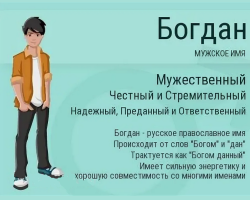Fruit hypoxia is a diagnosis that scares many mothers during pregnancy. How to determine it and whether it is possible to fight this condition - read in this article.
Content
- What does fetal hypoxia mean?
- Signs of fetal hypoxia during pregnancy
- What caused the fetal hypoxia during pregnancy?
- Diagnosis of fetal hypoxia
- Degree of hypoxia of the fetus and newborn
- How to avoid fetal hypoxia?
- What can be complications of fetal hypoxia?
- Video: Hypoxia and entering the umbilical cord
- What to do if you find the fetal hypoxia?
- Treatment of fetal hypoxia during pregnancy
- Fetal hypoxia during pregnancy: reviews
- Video: fetal hypoxia
- The fetus in the womb gets everything vital nutrients, in particular oxygen, through the placenta from the mother's body
- And although the lungs begin to form at the early stage of development, in the third trimester they become ready for independent breathing, yet breathing while in the womb, the child cannot
- Unfortunately, it sometimes happens that this only source of air and life for various reasons begins to supply the baby not enough, as a result of which it develops fruit hypoxia
What does fetal hypoxia mean?
Fruit hypoxia -The baby’s oxygen starvation in the womb that occurs against the background of insufficient oxygen intake through the placenta or due to its incomplete assimilation by the body of the child. This can happen for various reasons and lead to various consequences.

According to statistics, more than 10% of childbirth accompanied by hypoxia of the fetus of varying degrees.
This dangerous state leads to the fact that the metabolism of the crumbs changes. At the initial stage of hypoxia, the child’s body tries to compensate for the lack of oxygen and speeds up the work of all organs and systems, but at the stage of a long -term one, chronic hypoxia This mechanism ceases to act and the consequences for crumbs can be the most deplorable.

Signs of fetal hypoxia during pregnancy
In the early lines, it is extremely difficult to assume about fetal hypoxia. This can only be indicated by the presence of certain diseases in the motherwho a priori pose a threat to the supply of an oxygen. Such diseases include:
- anemia (low blood content in the blood of a pregnant woman of hemoglobin)
- lung diseases (asthma, bronchitis)
- diabetes
- cardiovascular diseases
- some kidney diseases
- intoxication
- oncology
- alcoholism and drug addiction

Assume that perhaps the baby in the womb is subjected to oxygen starvation and you can and with ultrasound. If the parameters of the child do not correspond to the deadline, namely, they are less than the norm, then this talks about a lack of nutrients or oxygen.
Also, a Doppler study with hypoxia will show a rapid heartbeat or, conversely, slowed down.
Dopplerometry It can reveal a violation of blood circulation in the arteries and placenta, which unambiguously leads to hypoxia of the fetus.

In the second half of pregnancy, when a child is in the womb i am pleased with my mother with movements, a pregnant woman herself can install hypoxia.
If the baby behaves too actively or his movements occur less often than usual, then the woman should turn to the gynecologist, because changes in the rhythm of movements Branches are one of the most obvious signs of hypoxia.
What caused the fetal hypoxia during pregnancy?
As already mentioned above, insufficient intake of oxygen From mother to child can be caused by various diseases of the woman.
But this is not the only factor causing hypoxia. Scientifically established that smoking a womanwhich bears a child, can provoke a lack of placental nutrition, which means that the child in this case will receive Less oxygen.

Negatively in the condition of the woman and the child affects and rare stay in the fresh air. If a woman is in a stuffy room for a long time, then this can also lead to fetal hypoxia.

But not only changes in the body of the mother can provoke a change in the volume of oxygen that comes to the child. Stay out as well the following causes of fetal hypoxiaassociated with changes in the child’s body and the characteristics of pregnancy:
- placing placenta
- gestosis
- congenital malformations of the fetus
- overstraining of pregnancy
- infection
- anemia in a child
- opening an umbilical cord

Acute hypoxia can happen and during childbirth, if the birth activity of the woman in labor will be weak and the child will be in the birth canal for a long time.
Diagnosis of fetal hypoxia
- One of the methods for diagnosing the development of hypoxia is listening to the heartbeat of the child Using a stethoscope
- This is done both during a planned visit to the gynecologist, and during contractions and childbirth, when there is a large the risk of asphyxia baby
- But this method is quite inaccurate, since the calculation of the number of heart beats can be incorrect, which can lead to an erroneous assessment of the state of the child

- A more modern and reliable method is considered a research method called KTG (cardiotocography)
- The method consists in listening to the fetal heartbeat using sensors, while the result is immediately fixed by the device on paper
- Exploring increased heart rate, the doctor draws a conclusion about the condition of the child in the womb

With chronic hypoxia, the size of the baby will not to match the gestational agethat can be easily installed with Ultrasound.
Hypoxia caused by insufficient placental nutrition is easy to determine using dopplerometrywhich will show the state of blood vessels and the degree of maturity of the placenta.
There are also different ones biochemical methods diagnosis of fetal hypoxia in which mother's blood examination.
Degree of hypoxia of the fetus and newborn
Modern medicine distinguishes three types of fetal hypoxia:
- Intrauterinewhen the baby suffers from a lack of oxygen while being in the womb
2. Intranatal - hypoxia, which develops during childbirth, while passing the child along the birth canal
3. Newborn hypoxia or asphyxia - oxygen failure in a child who has already been born

By the duration of the period, during which the child suffers without oxygen or, with a small admission, is distinguished chronic hypoxia, which can last several days, weeks and months and sharpwhich flows within a few minutes and hours.
In its severity Hypoxia can be moderate or severe. Assessment of this indicator is carried out after delivery using a special apgar scales. Five main indicators are highlighted in it and their assessment is made 0 to 2 points.
Immediately after birth, a general assessment of the state of the newborn is placed, after five minutes a re -assessment is made. If the assessment is 8-10 points, then the child is healthy and hypoxia did not occur during childbirth.

If on the scale of Apgar they put a child 4 to 7 points, then this speaks of moderate hypoxia, and with an indicator 0-3 points The diagnosis of severe hypoxia and asphyxia is diagnosed.
How to avoid fetal hypoxia?
Exist fACTIONS IMPOSITION OF THE WOMEN And hypoxia may not develop through its fault. Nevertheless, a woman who is waiting for a child should do everything so that the baby is comfortable under her heart, he grows correctly and develops.

The advice of experts will help in this:
- when registering, do not hide from a doctor diseases that you have
- refuse bad habits
- be more often in the fresh airwalk more on foot
- try to do yours food is as useful as possible And diverse, especially for iron -containing products, such as apples, liver, beef, buckwheat, herbs, spinach, sea fish, legumes.
- regularly visit gynecologist consultations, leading pregnancy, on time, pass the necessary tests and research
- more Rest, Avoid stressful situations

Carefully follow your condition and condition of the baby. If it physical activity It seemed strange to you or you are experiencing dizziness, the stomach often becomes solid, you should immediately consult a doctor, because it is at these moments that the baby it may suffer from a lack of oxygen.
What can be complications of fetal hypoxia?
Unfortunately, hypoxia it has serious consequenceswho sometimes leave their mark on the whole future life of the child, and sometimes bring and by death.
Oxygen starvation at the cellular level is fraught with a lack of energy in the cells and their further necrosis.

Most suffers with a lack of oxygen brain. Even insignificant hypoxia can lead to the fact that some brain cells will die, which will necessarily affect the health of the child.
But this is not the only organ suffering from a lack of oxygen. Depending on the severity of hypoxia and the duration of this dangerous state, they distinguish its consequences are its consequences in newborns:
- violation of the work of individual organs and their systems, in particular the central nervous system
- high intracranial pressure
- cloths, hemorrhage in tissue
- bradycardia or arrhythmia (rapid or slow heart)
- reduced muscle tone
- convulsions

One of the most severe consequences of hypoxia is children's cerebral paralysis (cerebral palsy), which leads to children's disability, mental retardation, low probability of adaptation in society. Among serious diseaseswhich are provoked by hypoxia distinguish:
- perinatal encephalopathy
- brain edema
- hydrocephaly
- epilepsy
- frequent development of the heart, kidneys, liver
- brain hemorrhage

The most severe consequence of hypoxia is the fatal outcome that occurs due to asphyxiation.
Video: Hypoxia and entering the umbilical cord
What to do if you find the fetal hypoxia?
If you suspect that the child in the womb is lacking in oxygen, you need see the doctor.
He will listen to the fetal heartbeat and, if necessary, directs to additional research and testing.

Confirmation of the diagnosis - no reason for panic. It is necessary to gain excerpts and follow all the instructions of the doctor in order to help your baby as quickly as possible and save him from grave consequences.
Treatment of fetal hypoxia during pregnancy
Since hypoxia is only a consequence of a disease, it is necessary to eliminate it cure the main ailment.
Each organism is individual and does not exist a general treatment for the causes of hypoxia, but thanks to certain measures, aimed at stabilizing the state Mother and child, hypoxia can be eliminated.

With hypoxia,:
- improving placental blood supply using medicines
- reducing the tone of the uterus (for this purpose, as a rule, no-shpa, papaverine, drotaverin, magnanus-in6 are prescribed)
- reception of vitamin complexes
- changing the regime of the day (increasing the time spent in the fresh air, power change, good rest)
In the case of chronic hypoxia, a woman hospitalized in a hospitalWhere she is under the supervision of doctors. If the cause of hypoxia fails is not possible and the woman’s condition does not improve, then she may be shown delivery by cesarean section, which is produced no earlier than the 28th week pregnancy.
Fetal hypoxia during pregnancy: reviews
Most women who are faced with fetal hypoxia say that this is a dangerous condition revealed when the tests and during the ultrasound.
Since not all women know about the norms of the fetal movements, it is very difficult to establish a hypoxia on the activity of the baby on their own.

- If there is a suspicion of hypoxia or your well -being worsens - you need to contact a gynecologist
- It is better to seem like a compassionate mommy, who is worried about any reason than to write off her suspicions on deceptive sensations
- So you can miss the development of a state in which every moment for the baby in the womb turns into suffering from a lack of oxygen







